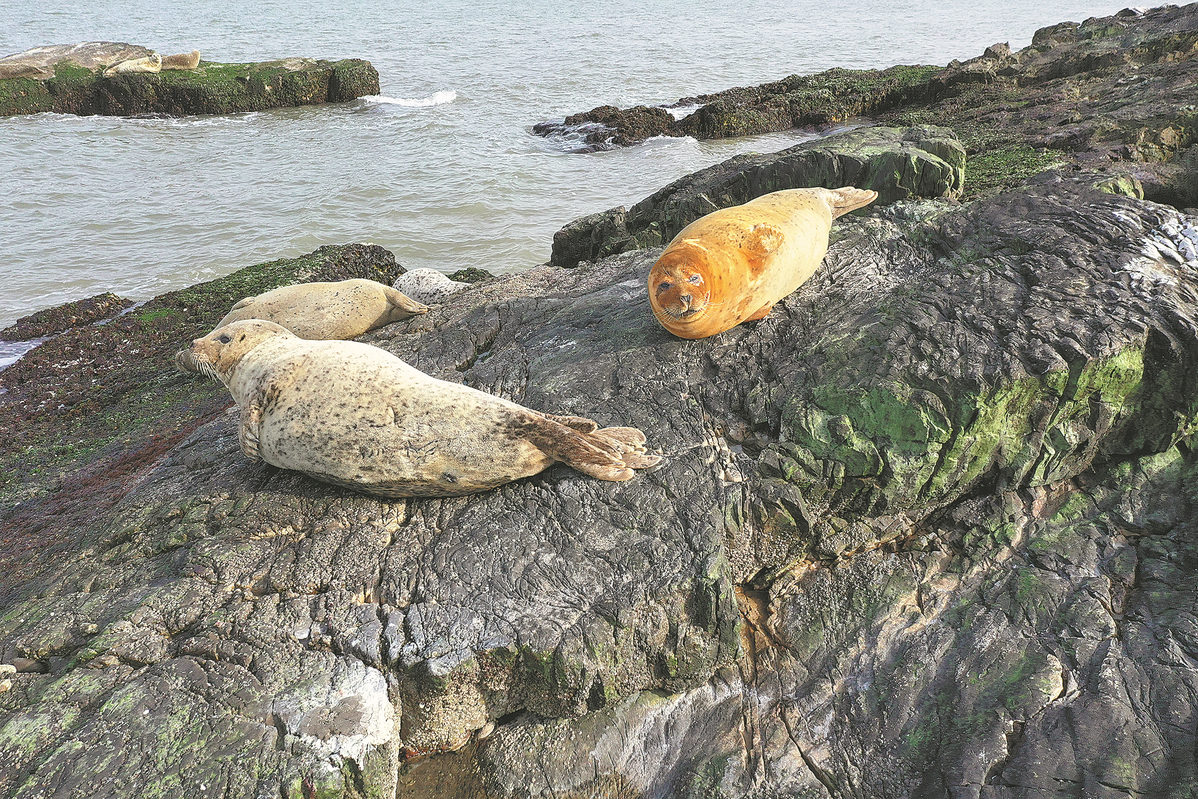Archipelago balances conservation with growth


Over the past two months, Yuan Jiangpo has been overseeing a project to construct seagrass beds off Daheishan Island in the Changdao archipelago, which is administered by Yantai city, Shandong province.
The project team has successfully seeded seagrass over an area of 1.6 hectares, said Yuan.
Seagrass beds, also known as seagrass meadows, are one of the three major nearshore marine ecosystems, along with mangroves and coral reefs. They serve as important breeding grounds for marine life and act as vital carbon sinks.
Earlier this year, Daheishan received official certification from the China Quality Certification Center, making it the first carbon-negative region in Yantai.
This achievement paves the way for developing the entire Changdao archipelago into an international zero-carbon ecological island cluster.
The archipelago, located between the Bohai Sea and the Yellow Sea, consists of 151 islands, with 10 towns on 10 of the inhabited islands that are home to 43,000 people.
To promote green, low-carbon and high-quality development of the islands, Changdao was designated as Changdao Marine Ecological Civilization Comprehensive Experimental Zone by the Shandong provincial government in 2018.
"Seaweed cultivation in Changdao is in good condition, which is the most promising pathway for enhancing the carbon sink," Han Guangxuan, deputy director of the Yantai Coastal Zone Research Institute of the Chinese Academy of Sciences said at a meeting in August. The event was held to discuss the conversion of Changdao into an international zero-carbon zone.
In Sunjia village, Nanchangshan Island, locals who used to commercially breed sea cucumbers and scallops — an endeavor that damaged and polluted the coastline — now have a clean and beautiful coastline thanks to their cultivation of seaweed.
"By planting seaweed, the nearby coastal areas have gradually recovered their resources, leading to the return of sea animals such as crabs and octopuses," said villager Xiao Shuquan. "Years ago, the coastline was marred with sea cucumber breeding facilities, which not only damaged the coastline but also discharged aquaculture wastewater directly into the sea."
- Team formed to investigate the loss of 29 cultural relics
- Investigation into school uniforms confirms safety of waterproof layer
- Taiwan students join winter sports exchange in Tianjin
- World's largest vertical shaft boring machine deployed for cross-river railway tunnel
- Former chairman of State-owned enterprise sentenced to death with two-year reprieve
- Sichuan's ecological restoration attracts record number of migratory birds





































